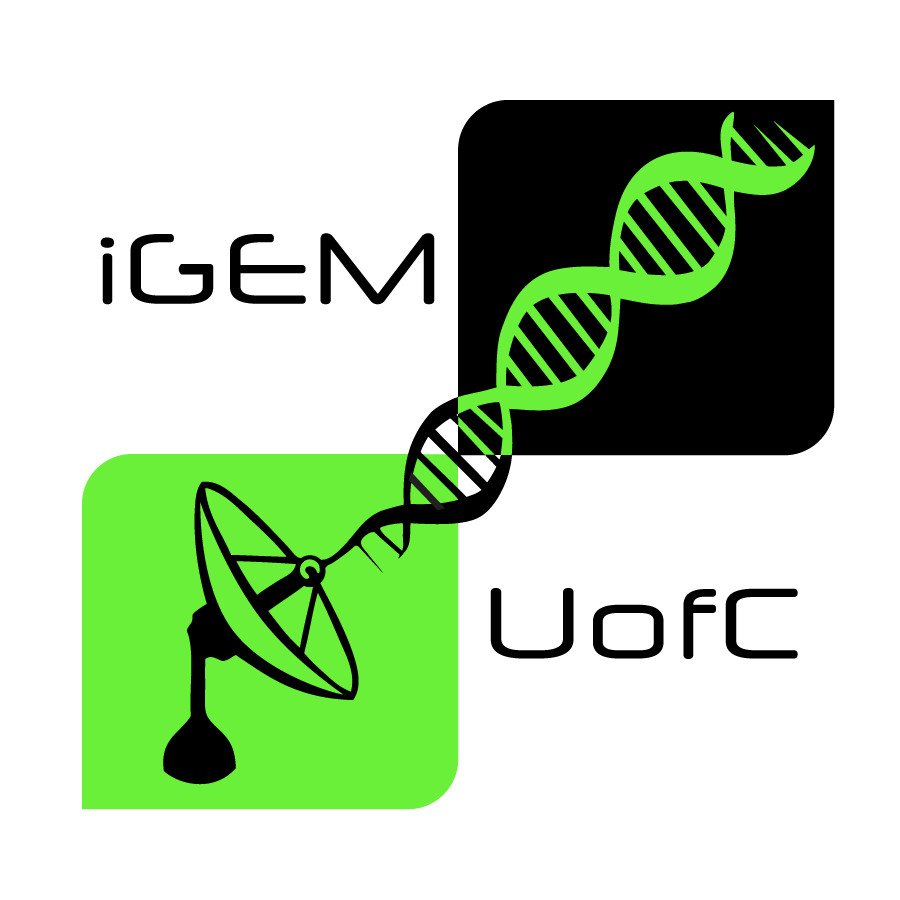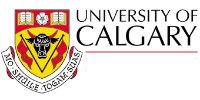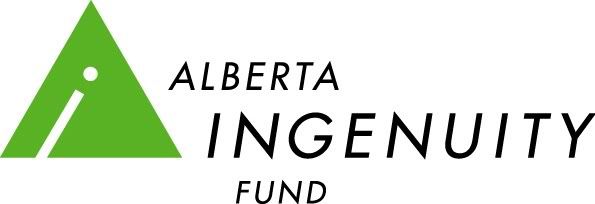|
|
iGEM - INTERNATIONAL GENETICALLY ENGINEERED MACHINES
The iGEM competition is a synthetic biology competition held annually at Massachusetts Institute of Technology (MIT) in November. Started in 2004, the iGEM Jamboree brings together teams from multiple universities to compete on an international stage. The competition allows undergraduate teams from all over the world to be part of the emerging field of Synthetic Biology, an intertwining of principles from Biology and Engineering. For more information about iGEM, please visit their official website.
The U of C iGEM team is made up of 15 undergraduate students from Health Sciences, Engineering, Computer Science and Kinesiology as well as 4 facilitators. For more information regarding the U of C iGEM Enterprise, please visit our website.
|
NAVIGATION
Need help navigating our site? Click HERE for a navigational guide and sitemap. Or, follow our tour:
A TOUR OF THE UNIVERSITY OF CALGARY iGEM TEAM

Welcome to the University of Calgary iGEM wiki! This tour will give you a broad overview of our project, through our different subgroups and what we've been up to lately. This is the first step of our tour! Here you can click and see a few pictures of our adventures in synthetic biology, as well as leave some comments and read a brief overview of iGEM (which is above) and of our project (which is below). Once you've finished exploring our front page, please click HERE for an intro to our team!
|
THE PROJECT - COMMUNICATION

|
Communication is essential in our everyday lives; it drives collaboration, understanding, and progress. The University of Calgary iGEM Team recognizes the importance of communication in developing the field of synthetic biology. This year, our team is exploring the development of a communication system in E. coli: the AI-2 signalling system. This system allows for the coordination of bacterial behaviour, essentially allowing a large group to act as a single organism.
|

|
Using mathematical modeling, we are developing models that allow us to predict and evaluate the signalling system's behaviour, thus characterizing the circuit. We have chosen to approach modelling of our system through membrane computing and Matlab.
|

|
Beyond the development of a communication system between bacteria, we have also explored and demonstrated methods of communication with the public. For synthetic biology to flourish, there needs to be meaningful discourse between individuals, whether within the synthetic biology community, with other disciplines, or with the public. This is especially important when discussing the ethical issues that arise from synthetic biology. Our team is examining multiple aspects of concerns regarding synthetic biology, and looking at novel, interesting ways to communicate the results of our exploration to the public.
|

|
For meaningful discourse to occur, all participants require a working knowledge of the concepts they are discussing. Education is a fundamental aspect of providing and spreading such information. This year, our team is using multiple approaches in spreading information to the public regarding iGEM and synthetic biology, as well as providing educational opportunity to students. Such outreach programs include our High-School workshop. We are also developing an educational tool for teaching synthetic biology within the virtual program Second Life. In Second Life, we are creating the means to teach the potentials of synthetic biology, the assembly of genetic circuits, and molecular biology lab procedures. We hope that our virtual learning environment will allow for the training of future iGEMers in molecular biology.
|

|
In addition to utilizing education and outreach to raise the profile of synthetic biology, our fundraising endeavors have also allowed us to create more interest in this field. Our communication with businesses in many industrial sectors allows for the discussion of the opportunities and future developments provided by synthetic biology and the potential applications of our signalling circuit.
|

|
Another important aspect of communication in this competition is the availability of collaborative work, within our own team and as a community itself. Our team is made up of students from health sciences, kinesiology, and engineering; who are actively participating in interdisciplinary work. This requires the ability to communicate information to people from different backgrounds and perspectives. As well, iGEM allows us to communicate with other teams at an international scale. We hope to establish means of communication and thus cooperation with other teams in our respective projects, enhancing the iGEM experience.
The wetlab, modelling, second life, human practices, and fundraising components of our project have allowed us to establish communication at the cell, individual, and synthetic bio community levels.
|
|


 "
"










































